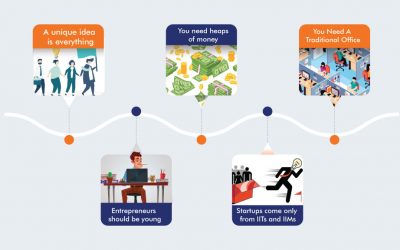How To Improve Your Sales Skills: A Step-By-Step Guide
Sales skills are the backbone of success in any business. Whether you’re an entrepreneur, a sales professional, or even a freelancer, knowing how to improve your sales skills is a crucial ability that can drive your career or business to new heights. Like any skill, mastering the art of selling requires dedication, practice, and continuous improvement.
In this step-by-step guide, we will explore practical strategies and techniques to enhance your sales skills and increase your conversion rates. From building rapport with customers to closing deals with confidence, let’s embark on a journey of self-improvement and unlock the secrets to becoming a sales superstar.
Mastering the Art of Selling: How to Improve Your Sales Skills Step by Step
Step 1: Understand Your Product or Service
To become a successful salesperson, the first and most crucial step is to have a deep and comprehensive understanding of the product or service you are selling. Whether you’re promoting a cutting-edge technology, a life-changing solution, or a simple everyday item, knowing its ins and outs is essential for effective selling.
1. Study the Features and Benefits
Take the time to familiarize yourself with all the features of your product or service. Understand how each feature addresses specific customer needs and translates into benefits for the buyer. Being well-versed in the advantages your offering brings will make you more convincing during sales interactions.
2. Know Your Unique Selling Points (USPs)
Identify what sets your product apart from competitors. Whether it’s a competitive price, superior quality, or innovative features, emphasizing your USPs can give you a competitive edge and attract potential customers.
3. Address Customer Pain Points
Your product or service should offer solutions to your target audience’s pain points or problems. Understand the challenges your customers face, and position your offering as the answer they have been searching for.
4. Stay Updated with Product Updates
Products and services often evolve over time. Stay informed about any updates, improvements, or new features that may enhance your offering’s appeal and address customers’ changing needs.
5. Be Prepared for Questions
Anticipate potential questions that customers might ask about your product or service. Being prepared with well-informed answers demonstrates your expertise and builds trust.
6. Test and Use the Product Yourself
Using the product or service firsthand can provide valuable insights and experiences. It will allow you to speak authentically about its benefits and genuinely believe in what you’re selling.
Remember, understanding your product or service is the foundation of successful selling. The more knowledgeable and passionate you are about what you offer, the more confident and persuasive you’ll be when engaging with potential customers. Take the time to learn and explore every aspect of your offering, and you’ll be well on your way to mastering the art of selling.
Step 2: Identify Your Target Audience
Knowing your target audience is essential for tailoring your sales approach and effectively reaching the right customers. By understanding their preferences, needs, and pain points, you can personalize your sales pitch and connect with potential buyers on a deeper level. Here’s how to identify and define your target audience:
1. Conduct Market Research
Begin by conducting thorough market research to gather insights about your potential customers. Analyze demographics, interests, and buying behaviors to create a detailed profile of your ideal customer.
2. Segment Your Audience
Divide your target market into distinct segments based on common characteristics. These segments can be based on age, location, industry, interests, or other relevant factors.
3. Define Buyer Personas
Develop detailed buyer personas that represent different customer types within your target audience. Each persona should include demographic information, pain points, goals, and motivations.
4. Analyze Customer Feedback
Gather feedback from existing customers through surveys, reviews, and direct interactions. Use this feedback to identify patterns and gain a deeper understanding of their needs and expectations.
5. Stay Updated on Industry Trends
Keep a close eye on industry trends and changes that may impact your target audience. Being aware of emerging trends can help you adapt your sales approach accordingly.
6. Use Social Listening
Monitor social media platforms and online forums to understand what your target audience is saying about your industry, products, or competitors. Social listening can provide valuable insights into customer sentiment.
7. Engage in Customer Interviews
Conduct interviews with current customers to gather in-depth information about their preferences, pain points, and reasons for choosing your product or service.
8. Utilize Analytics Tools
Leverage analytics tools to track website visitors, their behavior, and interactions. This data can offer valuable insights into your audience’s interests and online activities.
9. Survey Lost Opportunities
Reach out to leads who did not convert into customers and inquire about the reasons for their decision. Understanding why potential customers didn’t make a purchase can help you refine your sales strategy.
10. Refine Your Target Audience
As your business evolves, continuously evaluate and refine your target audience. Customer needs and preferences may change over time, so adapt your approach accordingly.
Identifying your target audience allows you to focus your efforts on the most promising leads and tailor your sales messages to resonate with their specific needs. By understanding who your customers are and what drives them, you can create a more compelling and persuasive sales pitch that leads to higher conversion rates and long-term customer loyalty.
Step 3: Develop Exceptional Communication Skills
Effective communication is at the heart of successful sales. Mastering the art of communication can help you build strong connections with potential customers, convey the value of your product or service, and ultimately close more deals. Here are essential strategies to develop exceptional communication skills:
1. Active Listening
Pay close attention to what your customers are saying and demonstrate genuine interest in their needs. Avoid interrupting and give them the space to express themselves fully.
2. Empathy
Put yourself in your customer’s shoes and understand their perspective. Empathy allows you to connect emotionally with customers and build trust.
3. Clarity and Conciseness
Be clear and concise in your communication. Avoid using jargon or complicated language that may confuse customers.
4. Positive Body Language
Maintain open and positive body language during face-to-face interactions. Maintain eye contact and use gestures to reinforce your message.
5. Mirroring
Subtly mirror the body language and tone of voice of your customers to establish rapport and create a sense of familiarity.
6. Ask Thoughtful Questions
Use open-ended questions to encourage customers to share more information about their needs and preferences.
7. Tailor Your Pitch
Customize your sales pitch to address the specific needs and pain points of each customer. Highlight how your product or service can provide solutions.
8. Storytelling
Use storytelling to illustrate the benefits of your offering and create a memorable impact on your customers.
9. Handle Objections with Grace
When faced with objections, respond calmly and address concerns with confidence. Use objections as an opportunity to provide additional value.
10. Practice Active Feedback
Encourage customers to provide feedback on your pitch and adapt based on their input. Feedback helps you improve and refine your communication approach.
11. Speak with Authority
Exude confidence and authority in your subject matter. Customers are more likely to trust a salesperson who speaks confidently about their offering.
12. Be Authentic
Be yourself and maintain authenticity in your interactions. Customers appreciate honesty and transparency.
13. Use Mirroring and Matching Techniques
Match the pace, tone, and volume of your customer’s speech to create a sense of familiarity and build rapport.
14. Avoid Overpromising
Be truthful about what your product or service can deliver. Overpromising and underdelivering can harm your reputation.
15. Practice Public Speaking
Develop your public speaking skills by participating in workshops or joining speaking clubs. Public speaking can boost your confidence in sales presentations.
By continuously honing your communication skills, you can become a more persuasive and influential salesperson. Remember that effective communication is a two-way street, involving both speaking and listening. Embrace every opportunity to interact with customers and colleagues, as each interaction is an opportunity to improve and refine your communication prowess. The better you can connect with your audience, the more successful you’ll be in driving sales and building lasting customer relationships.
Step 4: Build Rapport and Establish Trust
People buy from those they like and trust. Focus on building rapport with your customers and establishing trust early in the sales process. Show genuine interest in their needs and concerns, and be authentic in your interactions. Trust is the foundation of lasting customer relationships.
- Be genuine, authentic, and attentive during interactions.
- Find common ground to create a sense of familiarity.
- Practice active listening and remember important details.
- Use mirroring to build comfort and connection.
- Respond promptly and be consistent in communication.
- Show empathy, respect, and transparency.
- Deliver on promises and admit mistakes if they occur.
- Highlight customer testimonials and follow up after sales.
- Be a problem solver, focused on customer needs.
Building rapport and trust takes time and effort, but it is crucial for successful customer relationships and long-term sales success.
Step 5: Overcome Objections
Sales objections are a common hurdle, but they can be opportunities to address customer concerns and build trust. Anticipate potential objections and be prepared with thoughtful responses. Turn objections into conversations that showcase the value of your product or service.
- Listen actively and acknowledge the objection.
- Ask clarifying questions to understand the root cause.
- Respond empathetically and provide value-based solutions.
- Use success stories to illustrate how others have overcome objections.
- Stay calm, positive, and prepared.
- Redirect the conversation to other benefits if necessary.
- Seek feedback and offer guarantees if applicable.
- View objections as opportunities to build trust and demonstrate value.
Step 6: Practice Active Listening
Active listening is crucial in sales. Pay close attention to your customers’ words, tone, and body language. This will not only help you understand their needs better but also allow you to respond empathetically and address their concerns effectively.
- Give undivided attention and maintain eye contact.
- Avoid interrupting and use verbal cues to show engagement.
- Paraphrase and summarize to ensure understanding.
- Ask open-ended questions to prompt detailed responses.
- Listen for emotions and empathize with the customer’s perspective.
- Be patient and avoid making assumptions.
- Take notes to remember important details.
- Seek clarification to avoid misunderstandings.
- Demonstrate genuine interest and stay focused on the customer.
Active listening fosters meaningful connections and helps you understand your customers’ needs better. By being fully engaged, you can tailor your sales approach and build trust, leading to more successful sales outcomes.
Step 7: Master the Art of Closing
Closing the deal is where the magic happens. Be confident, but not pushy. Ask for the sale in a way that aligns with the customer’s needs and desires. Use closing techniques such as the assumptive close or the alternative close to guide the customer towards making a decision.
- Recognize buying signals and ask for the sale directly.
- Use trial closes to gauge customer interest.
- Highlight value and benefits.
- Offer incentives to create urgency.
- Address objections with confidence.
- Provide clear and easy-to-follow instructions for the next steps.
- Stay positive and maintain enthusiasm throughout the closing process.
Mastering the art of closing is essential for sealing the deal and achieving sales success. By using these strategies, you can confidently guide your customers towards making a purchase and build lasting relationships that lead to repeat business and referrals.
Step 8: Seek Feedback and Continuous Improvement
The journey to becoming a sales expert is a continuous one. Seek feedback from customers, colleagues, or mentors to understand your strengths and areas for improvement. Embrace constructive criticism and use it to refine your sales approach continually.
- Ask for customer feedback and act on it.
- Seek input from colleagues and mentors.
- Learn from successful peers and analyze sales data.
- Participate in sales training and role-playing.
- Stay informed about industry trends and be open to change.
- Set goals for improvement and celebrate successes.
- Learn from setbacks and invest in self-development.
- Stay customer-centric and maintain a curious mindset.
By continuously seeking feedback and striving for improvement, you can refine your sales skills and build stronger customer relationships, ultimately leading to greater sales success.
Step 9: Stay Motivated and Persistent
Sales can be challenging, and rejection is part of the game. Stay motivated and maintain a positive mindset. Embrace rejection as an opportunity to learn and grow. Persistence and resilience are key traits of successful sales professionals.
- Set clear goals and visualize success.
- Surround yourself with supportive people.
- Celebrate small wins and learn from failures.
- Stay positive and practice self-care.
- Be persistent and resilient in the face of challenges.
- Seek inspiration and learn from successful peers.
- Break down goals into manageable tasks.
- Connect with your passion for helping customers.
- Avoid burnout and stay organized.
- Keep learning and adapting to the sales landscape.
By staying motivated and persistent, you can navigate the ups and downs of sales, maintain focus, and achieve long-term success in your career.
Step 10: Invest in Sales Training and Education
Continuously investing in sales training and education is essential for professional growth and staying ahead in the competitive sales landscape. Here’s why you should prioritize learning and development:
1. Stay Updated with Industry Trends
Sales training helps you stay informed about the latest industry trends, market changes, and customer preferences.
2. Enhance Sales Skills
Training programs offer opportunities to refine your sales techniques, objection-handling abilities, and closing strategies.
3. Boost Confidence
Gaining new knowledge and skills boosts your confidence in sales interactions, making you a more effective communicator.
4. Learn from Experts
Sales training often involves learning from experienced experts and successful sales professionals who share their insights and best practices.
5. Adapt to Customer Needs
Education allows you to understand evolving customer needs and tailor your approach accordingly.
6. Improve Customer Relationships
Developing your interpersonal skills through training helps you build stronger and more meaningful relationships with customers.
7. Overcome Sales Challenges
Training equips you with tools to overcome common sales challenges and objections effectively.
8. Increase Sales Performance
Continuously investing in education can lead to improved sales performance and higher conversion rates.
9. Explore New Techniques
Sales training introduces you to innovative sales techniques and methodologies that can elevate your approach.
10. Build a Competitive Edge
A well-trained sales professional stands out in a crowded market, giving you a competitive edge.
11. Stay Motivated
Engaging in learning and self-improvement keeps you motivated and excited about your sales career.
12. Expand Your Network
Training workshops and seminars provide opportunities to network with like-minded professionals and potential clients.
13. Adapt to Technology
Sales training often includes education on leveraging technology and tools to enhance sales productivity.
14. Cultivate Leadership Skills
Advanced training programs may focus on developing leadership skills, preparing you for future managerial roles.
15. Invest in Your Future
Continuous learning is an investment in your professional growth and long-term career success.
By investing in sales training and education, you demonstrate a commitment to your career development and show potential employers or clients that you are dedicated to delivering exceptional results. Stay curious, embrace opportunities for learning, and remain open to exploring new sales methodologies and approaches. Your investment in education will undoubtedly pay off in the form of enhanced sales performance and a rewarding sales career.
Conclusion:
Improving your sales skills is an ongoing process that requires dedication and commitment. By understanding your product, knowing your audience, and developing effective communication and relationship-building techniques, you can become a sales powerhouse.
Remember, each interaction is an opportunity to learn and improve, so embrace the journey and let your passion for sales drive your success.
About CO-OFFIZ : Coworking Space in Delhi-NCR
CO-OFFIZ is a coworking space in Delhi-NCR tailored for young professionals, startups, freelancers, and entrepreneurs. We emphasize a collaborative work culture that enhances productivity while providing a hassle-free and aesthetically pleasing environment based on Vastu principles.
Our modern amenities include high-speed internet, unlimited tea/coffee, breakout zones, power backup, and CCTV security. Our vibrant meeting rooms feature LED TV projectors and ergonomic chairs, fostering an ideal workspace.
With locations in in Preet Vihar (East Delhi), Janakpuri (West Delhi), Netaji Subhash Place (North Delhi), Noida Sec-63 and Gurugram Sec-58, we offer flexible seating, dedicated desks, and private cabins at competitive prices, all conveniently located near metro stations for easy access.



